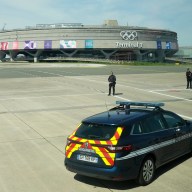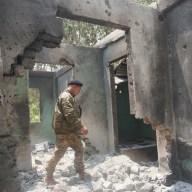If you’re reading this story, there’s a good chance you’re riding public transit. If you’re not in a bus shelter this instant, you may have been just moments ago.
It’s as simple as structure as you can imagine. Yet, even here, innovative greener ideas are being developed — and deployed.
The City of San Francisco is entering the third year of a five-year program to replace its 1,400 conventional shelters with modern, solar-powered alternatives.
“They’re made entirely from sustainable materials,” says Ryan Hughes, project manager for Lundberg Designs, creators of these new, sleek-looking shelters.
“The steel is recycled, and the solar power alleviates the cost of powering the shelter.”
Solar generators in the shelters’ roofs are actually connected directly to the city’s power grid. They donate electricity to the city during the day, then draw back what they need to power LED lights, WIFI capability, and an electronic “next bus” sign that lets every commuter know exactly how long their wait is going to be.
The overall effect? A zero net-draw on the power system. Throw in the fact that the shelters are being built, run and paid for by an advertising agency, and these updated high-tech transit stops aren’t costing the city a cent.
Increased comfort and convenience — virtually no ecological or financial downside.
The only thing missing — and this would be of particular interest to Canadian commuters — is heat.
“In terms of using the solar power, that would be challenging,” Hughes explains. “Given the general size of bus shelters, the amount of available roof area is limited. In our case, it works to power the equipment we have, because we were very careful about selecting only components that don’t draw very much power. I think heaters, just in general, require a lot of power to convert electricity into heat.”
San Francisco is famously cold, wet and windy, by California standards.
But a typical Canadian city faces winter conditions that are far more severe.
These eye-catching shelters are still a tweak or two away from being ideal in real winter conditions.
















